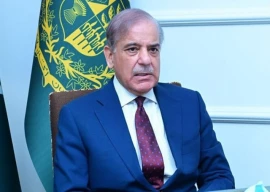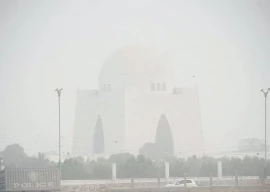
Relations between Pakistan and the United States (US) have traditionally been complex and multifaceted. The leaders of both countries have often expressed reservations, if not criticism, about each other’s disposition and there have been periods when they maintained minimal or routine relations. However, they do not opt for a total break, although some non-official circles in both countries have periodically talked of exercising this option.
The latest revival of Pakistan-US relations began after the terrorist attacks in the US on September 11, 2001. Pakistan abandoned the Taliban government in Kabul and joined the US-led global effort to fight terrorism. This reinvigoration of their relations has not been free from problems. Both sides have developed a host of complaints against each other over the last 13 years. If the sharp criticism of American policies towards this region has become an established practice in Pakistan, it is difficult to find any sympathetic discourse about Pakistan in the Washington-based think tanks and on Capitol Hill. It seems that the current level of official interaction between Pakistan and the US will become unsustainable after the US drawdown in Afghanistan and the end of the five-year funding under the Kerry-Lugar-Berman Law in 2015.
The US will have to address two interrelated questions in 2015-16. Can American interests in the region around Pakistan be served best by loosening ties with Pakistan and relying more on India, and Iran (post-nuclear settlement)? If the US wants to keep Pakistan on board for pursuing its goals in the region, how would it articulate a new relationship that satisfies Pakistan’s security concerns in the region and, at the same time, convinces the Washington-based official and non-official security and foreign policy elite about the continued relevance of Pakistan?
Pakistan also faces dilemmas in chartering its relations with the US in the post-2014 period. A good number of politically active people, including those in power at the federal level, think that Pakistan was dragged into the global effort to control terrorism by a dictator (Pervez Musharraf), which did not serve Pakistan’s interests. They also think that the Pakistani Taliban are angry because of Pakistan’s participation in American counterterrorism policy and that once American troops leave the region, it would be easy to win the Pakistani Taliban back into Pakistan’s Constitutional and legal fold.
The myth of making up with the Taliban will soon explode. The Nawaz Sharif government has hardly done any serious thinking for dealing with such a situation. It also shies away from talking about relations with the US from 2015 onwards.
The historic and current dilemmas in Pakistan’s relations with the US have been analysed in an easy-to-read and succinct manner in a recently published book entitled No Exit from Pakistan: America’s Tortured Relationship with Islamabad by Daniel S Markey (Cambridge University Press, 2013, 2014). It not only offers a critical appraisal of this difficult relationship but also addresses various aspects of Pakistan’s political and societal problems that influence Pakistan’s domestic and foreign policy choices. He offers three scenarios about Pakistan’s political trajectory (pages 65-71). Other important themes relating to the domestic context include Pakistan’s internal political and societal challenges projected as ‘Four Faces’, the nuclear-related concerns, the military and militancy, the strands of anti-Americanism, the political crisis in 2007, Benazir-Musharraf accommodation and the transition from Musharraf to the elected government.
Daniel Markey shares the views of other writers that relations between Pakistan and the US represent the typical dilemmas of interaction between a superpower with a global agenda and a developing state with local and regional interests. These interests do not always coincide, causing strains in their relations. Right from the beginning of the relationship in the mid-1950s, Pakistan and the US developed complaints against each other. Any change in the US’s global interests caused changes in its policies in South Asia.
He acknowledges that Pakistan’s political circles believe that the US viewed Pakistan ‘as a means to other ends’ like fighting communism, Soviet troops in Afghanistan or terrorism. “When Pakistan was helpful, it enjoyed generous American assistance and attention. When Pakistan was unhelpful, the spigot was turned off” (page 2). He rightly maintains that Pakistan also endeavoured to use the US to its advantage. It viewed this relationship “as a means to balance against India”. Consequently, the US and Pakistan failed to build this relationship to serve “beyond the immediate needs of the day” (page 3).
The book devotes attention to how Pakistan got on board for fighting terrorism in 2001 and the economic, military and diplomatic support that became available in the subsequent years. Whereas the contribution of Pakistan in arresting al Qaeda activists is acknowledged, the author talks about the divergences in their counterterrorism approaches, especially how to deal with various militant groups, the tribal areas and cross-border movement on the Pakistan-Afghanistan border.
The discussion of the most troubled year of bilateral relations — 2011—offers useful insights. The troubled incidents were: the Raymond Davis issue, the US military operation in Abbottabad to kill Osama bin Laden, Admiral Mullen’s anti-Pakistan tirade before his retirement, the US helicopter attack on Salala check post, and the suspension of American supplies to Afghanistan through Pakistan.
Markey offers three possible approaches to deal with Pakistan in the future: defensive insulation of Pakistan, military-first security cooperation and comprehensive cooperation. His preference is for combining the last two approaches because a complete cut-off and enforcing isolation of Pakistan is not viewed as a viable option. The analysis has a lot to offer to the policymakers of the two countries.
Pakistan and the US are difficult allies. If the relationship reflects the problems of stable relations between a developing country and a superpower, it also shows that a developing state can manoeuvre options within a specific political and geographic context. However, the long-term foreign policy options depend on a state’s internal political consolidation and economic resilience.
Published in The Express Tribune, June 3rd, 2014.
Like Opinion & Editorial on Facebook, follow @ETOpEd on Twitter to receive all updates on all our daily pieces.
COMMENTS (11)
Comments are moderated and generally will be posted if they are on-topic and not abusive.
For more information, please see our Comments FAQ






















































@Anjaan: Doesnot hold for N.Korea because they donot want to interact AT ALL with USA. They don't want to get any money from US - they could have if they wanted. Instead they blackmail China and to some extent S.Korea from whom they have got lots of aid.
What value does Pakistan provide the USA once they withdraw from Afghanistan? Answer that and you will know which direction the relationship is going. The harsh reality is that if the USA stopped talking or doing business with Pakistan few in the USA would even notice. The days of financial aid are going to stop and they may even stop selling you new weapon systems because that might offend India whom they are trying to foster a better relationship. Benign neglect maybe the best thing you can look forward to - beats being labeled a State Sponsor of Terrorism and the related embargoes that come with it.
Nawaz govt. is not paying much attention in foreign affairs. We don't have a foreign minister. The withdrawl of NATO troops, Change of govt. in india and in Afghanistan, policies of indian PM and expected president of Afghanistan, their behaviour towards Pakistan. India's increasing influence in Afghanistan and iran are the points to which our foreign ministry should pay attention. Otherwise we will be trapped by india from all sides.
@Abdul Ghafar Khan (PhD Scholar)
What a waste of time and energy to be a scolar, who should be more concerned with the role of Pakistan in the World War 3 scenario, which is developing?
Rex Minor
Pakistan is an important country in the region as compare to other countries in the region because :
1- Pakistan was the country which bring closer or built first relation between US and China 2- Pakistan is the country which defeated USSR and handover the keys of this region to US
3- Pakistan is the country which create a good image of US among the Islamic Country. 4- Pakistan is the only country which waz on front line during globally war with terrorism .
Hellow US don't ignore us because you need more now as compare to past
@ Arindom, If what you said was true, then the Americans would also provide tens of billions of dollars worth of military and economic aid to N Korea, because the rationale remains the same ... do you think the American's are idiots ... ??
The reality is, as long as the America strategic objective of containing India remains, they will never run out of excuses to maintain Pakistan's firepower ... !!
It is the greatest irony of human history that Pakistan and US are allies and have a relationship at all...of any kind. The existence of such relationship only shows US has not conducted itself according to the lofty principles on which it was founded.
US has done many things wrong in its existence for nearly two and a half centuries. But the concept of the US is the antithesis of the concept of Pakistan which was founded on the principle if you practice a particular religion, you cannot live peacefully with your neighbhor who practices a different religion.
For all the ghairat why not prove once and for all that you can live without the US. Don't apply for visas, don't ask for aid or arms. Just treat them like an enemy that you propagate they are.
To put all these tomes in a single line, the only reason the US and Pakistan pays any interest is because Pakistan has got a gun pointed on it;s own head threatening, " if you don't pay attention to us and give us goodies, we'll implode and that means more terrorism and more proliferation"
''The Nawaz Sharif government has hardly done any serious thinking for dealing with such a situation. It also shies away from talking about relations with the US from 2015 onwards'.
'I would say talk talk you would do knock knock' is the strategy that NS is pursuing.sanp bhi mar gaya lathi bhi na tooti. We are not mercenaries to remind America for not forgetting us beyond 2015 for securing her future interests in the region instead we should concentrate ourselves on civilizing our ways as a respected country in the community of nations. Thanks.